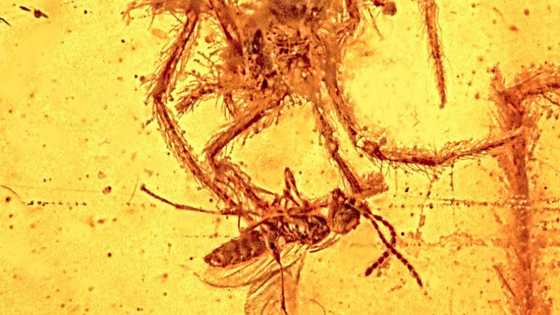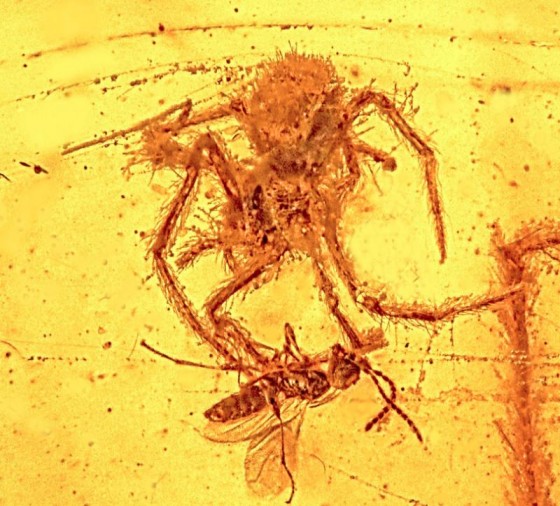Fossilized spider attacking a wasp is 110 million years old. JURASSIC PARK GET.
Check this shit out! Straight up Jurassic Park. I don’t know what we’re going to clone from this glorious preservation, but I am calling first dibs on riding it. Hell yeah! Buying my new riding crop. T-Rex. Giant spider. Don’t matter. I got firsties.
io9:
Paleontologists have discovered beautifully preserved species trapped in amber before — but this one is extraordinary. It features a parasitic wasp that has become ensnared in a spider’s web, with the owner bearing down on it for an attack. But just before the spider was about to have its meal, a drop of resin flowed down from above, freezing the moment in time.
Researchers date the scene to the Early Cretaceous between 97 to 110 million years ago in the Hukawng Valley of Myanmar — a time when dinosaurs would have most certainly been in the neighborhood. And in addition to the dramatic scene, the fossil also contains the body of a male spider in the same web — the first evidence of spider social behavior in the paleontological record.
Spider sociality still exists in some species, but it is very rare. Today, most spiders live solitary lives, often resorting to cannibalism — including males who often attack immature species in the same web.
But as for catching unsuspecting prey in a web, that appears to be an evolutionary strategy that has survived the test of time. And in fact, spiders are an ancient invertebrate that first emerged about 200 million years ago. The oldest fossilized record of a spider dates back to 130 million years ago. This recent discovery is considered the first and only fossilized example of a spider attack on prey caught in its web.





